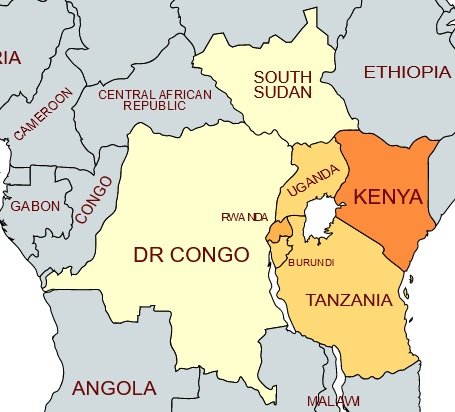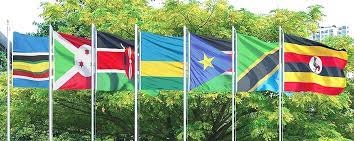Dr. Abdurahman Baadiyow
Somalia is aspiring to become a permanent member of the East African Community (EAC), which is the regional intergovernmental organization that includes Kenya, Uganda, Tanzania, Rwanda, Burundi, South Sudan, and the Democratic Republic of the Congo. EAC is not only a community of states but also a community of non-state actors (civil society and business community) aiming to develop their countries through cooperation and collective actions.

Somalia applied for EAC membership in 2012 and is likely to be approved at the next summit that will take place this month. The mission of the EAC is to widen and deepen economic, political, social, and cultural integration to improve the quality of life of the people of East Africa through increased competitiveness, value-added production, trade, and investments. EAC is a political and economic forum, based on the idea of multifaceted cooperation, under the slogan of ‘one nation and one destiny.’ It aims to establish the East African Federation of its member states into a single sovereign state gaining experience in the process of establishing the European Union.
The EAC is one of the fastest-growing regional economic blocs in the world with an estimated gross product exceeding $300 billion annually, with a growth equivalent to 6.2% per year. The forum contains a population of about 300 million people and is among the fastest-growing gatherings in the world. It has the advantage of abundance in the productive age group and is located on a land area estimated at approximately 5 million square kilometers. In addition, this forum is linked to several strategic partnership frameworks with major regional and international forums and entities.
Aiming to full political federalism, the EAC has many structures, councils, and institutions working to achieve its plan approved by the heads of its member states through their annual meetings. So far, member states achieved remarkable progress in vital areas, including the unification of customs tariffs, civil aviation, and public health, and they are moving towards unifying the laws and the judicial system and encouraging development initiatives and scientific research. It aspires to make the Swahili language the common unified language of the peoples of those countries.
Seeking membership in the EAC, Somalia has taken a speedy process as Somali President H.E. Hassan Sheikh Mohamud urged the East African Community to fast-track Somalia’s admission into the Community at the Summit in Arusha in October 2022. To move this agenda forward, the President appointed Dr. Abdusalam H. Omer as his Special Envoy to the EAC who previously served as Somalia’s Minister of Foreign Affairs. Moreover, Somalia invited the Secretary-General of the EAC Mr. Peter Mathukito to visit Somalia and met with Somali officials, including the President. Also, President Hassan lobbied for Somali accession to the EAC in his recent meeting with the Presidents of EAC at the 36 AU summit in Addis Ababa held on 18-19 February 2023. Furthermore, the verification team chaired by Mrs. Tiri Marie Rose from the Republic of Burundi and experts from the EAC Partner States visited Mogadishu from 25/1/- 3/2/2023, to assess the country’s level of conformity and eligibility with the set criteria for admission for accession. It is expected that the assessment team will submit its report to the summit scheduled this month.
The question of why Somalia needs to join the EAC reverberates and begs for rational answers. The EAC is no longer an Anglophone Club of Three countries: Kenya, Tanzania, and Uganda. It is a rapidly growing African economic bloc neighboring Somalia in the south. Somali people’s relations with their African neighbors in the south had drastically changed for the better during the last three decades. This change occurred due to the brotherly reception that Somalis received in these countries after the collapse of the Somali state in 1991.
Many Somalis still live in these countries as well-treated refugees. Some of them were born, educated, acquired citizenship, and established vibrant businesses. In addition, the large Somali Ethnic community is part of Kenya in the Northern Frontier District (NFD). Moreover, Somalia needs to balance its relations between its Arab identity symbolized by belonging to the Arab League, and its African identity. In the past, Somalia tilted towards the Arab League and weakened its relations with its backyard African countries. This policy shrank the vital role Somalia could play as a bridge between the two blocs. Joining the EAC, Somalia will benefit significantly through economic cooperation and the free movement of goods, services, and people across the EAC member states. Moreover, EAC membership would also enhance Somalia’s efforts to improve its multilateral and fiscal standing in the debt-relieving program.
The other question begging for an answer is why EAC members are willing to accept Somalia. Firstly, three countries of the EAC, namely Uganda, Burundi, and Kenya are part of the AMISOM forces in Somalia that transformed recently into ATMIS. The presence of these forces created an environment of common understanding and collaboration with the Somali people. In addition, military cooperation and trade had grown with Somalia immensely during the last 10 years.

Moreover, Somalia adds to the EAC about 3000 km of coastline, a population of about 20 million people, and an area of 637,657 km2. It offers the EAC its entrepreneurial capital and culture, fisheries, livestock, energy, and natural resources, in addition to the financial services and flourishing communication sectors, and expertise in many other fields. It links ‘Africa to the Arabian Peninsula, which the region can tap into to increase intra-regional trade and improve the lives of East Africans,” as EAC secretary-general Peter Mathuki said. Also, the vibrant Somali Diaspora in the USA and Europe and its business networks with many emerging economies in Asia will bring added value and investment to the EAC.
In conclusion, Somalia’s joining the EAC is an overdue strategic decision that breaks Somalia’s historical isolation from its southern backyard of the African people. It enables Somalia to fly with two fully-fledged wings of its hybrid identities: belonging to Africans and Arabs. Because of its strategic location, Somalia is required to play its role in bridging the two regions for the advancement of peace and development. It should avoid being torn apart by competing regional and global powers. Lastly, the Somali membership which is recovering from the prolonged civil war in the EAC political and economic bloc sends a positive signal to the Somali people around the globe and instills hope and a sense of belonging to its region.
Dr. Cabduraxmaan Baadiyow
Email: abdurahmanba@yahoo.com

Leave a Reply